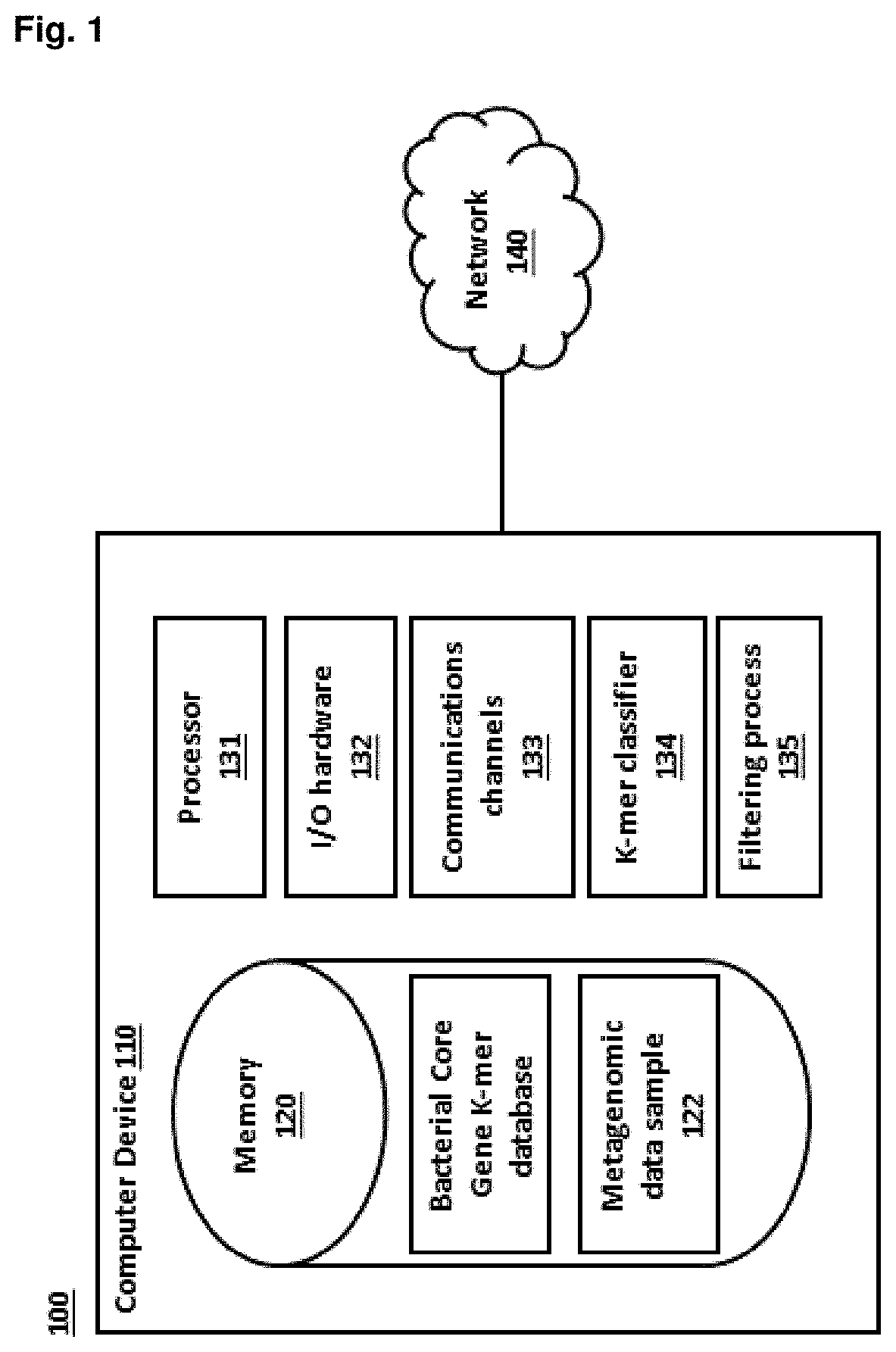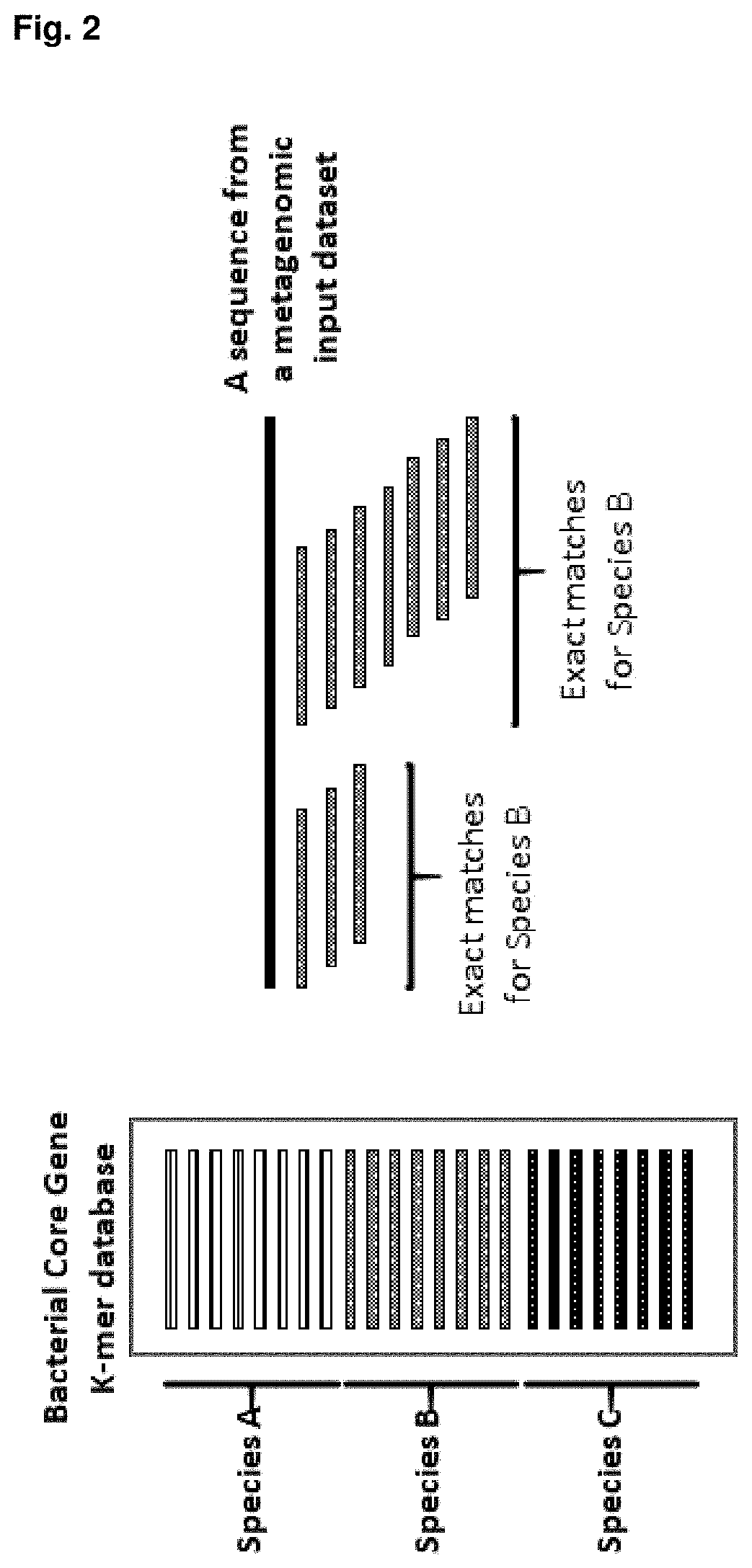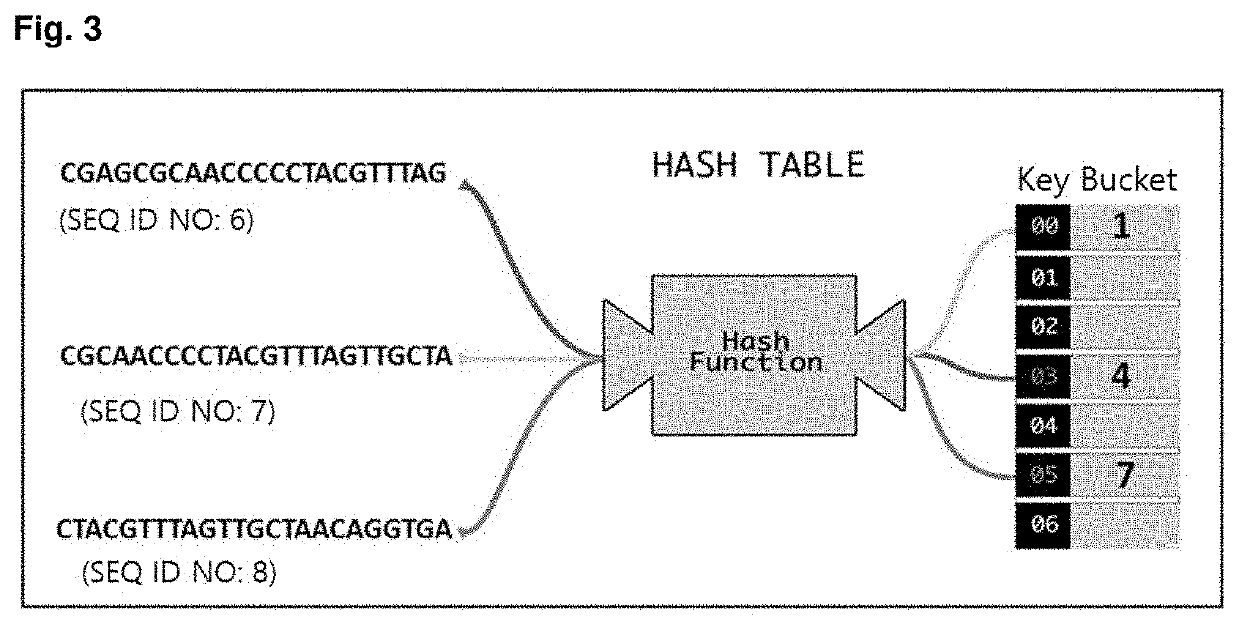Method for identifying and classifying sample microorganisms
a microorganism and sample technology, applied in the field of taxonomic profiling methods for microorganisms, can solve the problems of difficult to predict the taxonomic composition of metagenomic samples, the method requires an extremely large number of complicated calculations, and the “extract k-mer matching” approach is unreliable, so as to achieve the effect of analyzing faster and more accurately
- Summary
- Abstract
- Description
- Claims
- Application Information
AI Technical Summary
Benefits of technology
Problems solved by technology
Method used
Image
Examples
example 1
K-MER DATABASE OF BACTERIAL CORE GENE
[0179]Using the UBCG pipeline, 92 bacterial core genes were extracted from 9,604 genomes from the EzBioCloud database. The UBCG pipeline employs phylogenetic relation in order to identify a set of core genes, which are single copies in genomes.
[0180]In brief, the method for identifying a set of bacterial core genes and the obtained data was applied to the extraction and confirmation of core genes, based on the contents of the UBCG paper (Seong-In Na et al., Journal of Microbiology (2018) Vol. 56, No.4, pp 280-285). In the method of this paper, many publicized microbial genome data were analyzed and 92 genes that individual microbes have respective single copies were selected. Using HMM (Hidden Markov Model) of gene sequences corresponding to individual genes, gene sequence pattern profiles were made. The corresponding gene sequences were extracted and identified using a searching program using the gene sequence pattern profiles, such as HMMER.
[01...
example 2
N OF ANALYSIS ERROR RATE
2-1: Experimental Sample
[0187]A previously published synthesized metagenome input file was used to verify the classification method according to the present invention. The taxonomy and approximate abundance for the synthetic dataset are described in J Basic Microbiol by Laskar F et al. 2018 February; 58 (2): 101-119, “Diversity of methanogenic archaea in freshwater sediments of lacustrine ecosystems.”
2-2: Classification of Sample Microbe using Reference K-Mer Database
[0188]The sample metagenome input files in 2-1 were sorted by the KRAKEN program using the reference k-mer database of reference bacterial core genes in Example 1 and the reference k-mer database of entire bacterial genome in Comparative Example 1.
[0189]For the reference k-mer database of small-size bacterial core genes obtained in Example 1, the database was allocated to RAM memory so that the KRAKEN program could access the database faster. It took about 9 sec to sort 296,514 reads from the inp...
example 3
TEST OF MICROBE CLASSIFICATION
3-1: Experimental Sample
[0203]This experiment was performed to evaluate the accuracy of the metagenomic taxonomic classification using the k-mer database of bacterial core genes.
[0204]In this experiment, a test was made to determine whether the reference k-mer dataset of core genes according to the present invention or the reference k-mer dataset of entire genomes was of greater similarity to the 16S rRNA dataset. Particularly, selection was made of five random sets of Human Microbiome Project (HMP) (NCBI SRA ID: SRS058770, SRS063985, SRS016203, SRS062427, SRS052697) from both the 16S rRNA data and the shotgun data.
3-2: Taxonomic Analysis
[0205]The taxonomic profiling for each shotgun dataset was calculated using the reference k-mer database of core genes in substantially the same manner as in Example 1 and the reference k-mer database of entire genomes in substantially the same manner as in Comparative Example 1. The 16S rRNA data is taxonomically profi...
PUM
 Login to View More
Login to View More Abstract
Description
Claims
Application Information
 Login to View More
Login to View More - R&D
- Intellectual Property
- Life Sciences
- Materials
- Tech Scout
- Unparalleled Data Quality
- Higher Quality Content
- 60% Fewer Hallucinations
Browse by: Latest US Patents, China's latest patents, Technical Efficacy Thesaurus, Application Domain, Technology Topic, Popular Technical Reports.
© 2025 PatSnap. All rights reserved.Legal|Privacy policy|Modern Slavery Act Transparency Statement|Sitemap|About US| Contact US: help@patsnap.com



